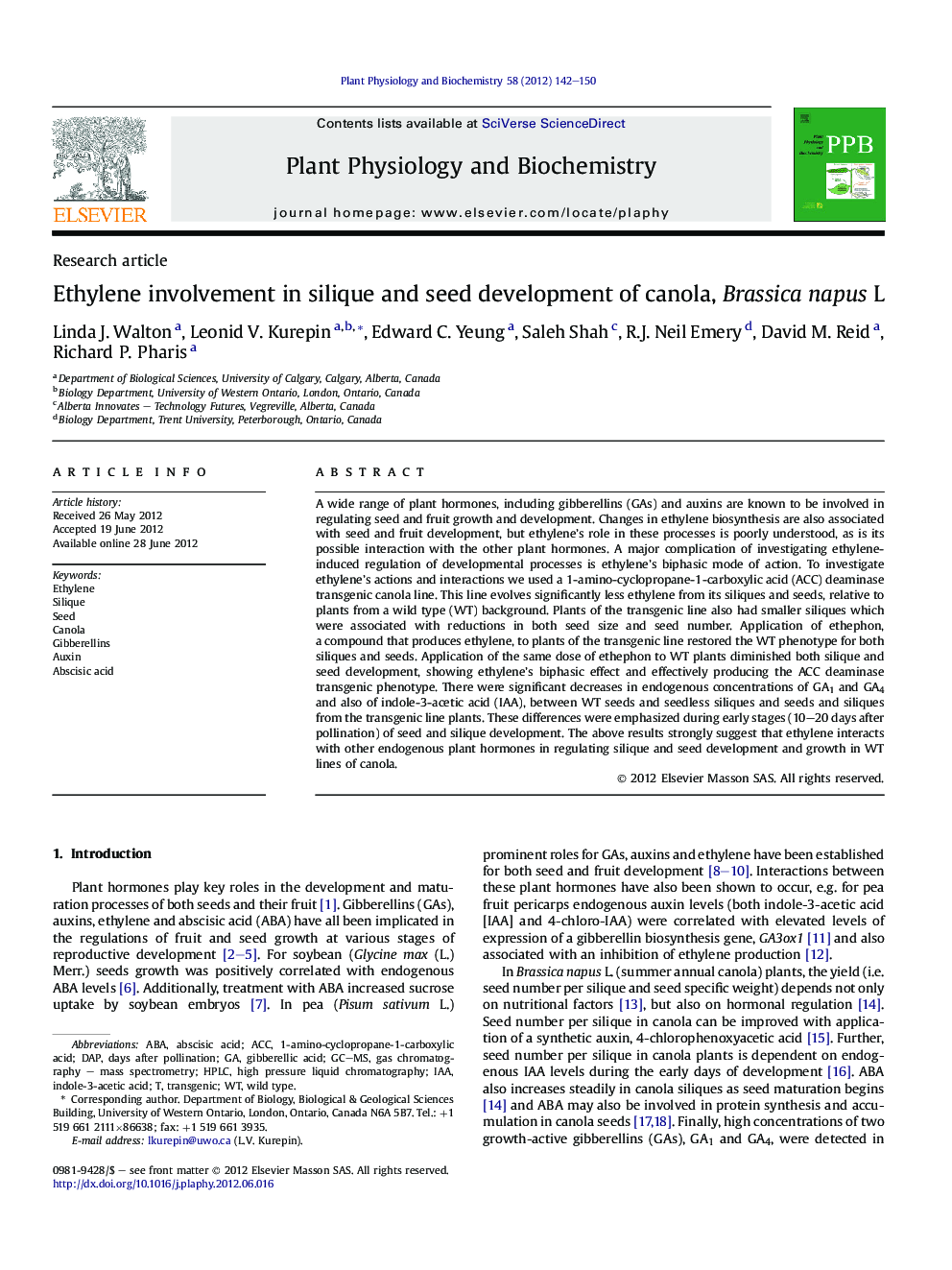| Article ID | Journal | Published Year | Pages | File Type |
|---|---|---|---|---|
| 2016168 | Plant Physiology and Biochemistry | 2012 | 9 Pages |
A wide range of plant hormones, including gibberellins (GAs) and auxins are known to be involved in regulating seed and fruit growth and development. Changes in ethylene biosynthesis are also associated with seed and fruit development, but ethylene's role in these processes is poorly understood, as is its possible interaction with the other plant hormones. A major complication of investigating ethylene-induced regulation of developmental processes is ethylene's biphasic mode of action. To investigate ethylene's actions and interactions we used a 1-amino-cyclopropane-1-carboxylic acid (ACC) deaminase transgenic canola line. This line evolves significantly less ethylene from its siliques and seeds, relative to plants from a wild type (WT) background. Plants of the transgenic line also had smaller siliques which were associated with reductions in both seed size and seed number. Application of ethephon, a compound that produces ethylene, to plants of the transgenic line restored the WT phenotype for both siliques and seeds. Application of the same dose of ethephon to WT plants diminished both silique and seed development, showing ethylene's biphasic effect and effectively producing the ACC deaminase transgenic phenotype. There were significant decreases in endogenous concentrations of GA1 and GA4 and also of indole-3-acetic acid (IAA), between WT seeds and seedless siliques and seeds and siliques from the transgenic line plants. These differences were emphasized during early stages (10–20 days after pollination) of seed and silique development. The above results strongly suggest that ethylene interacts with other endogenous plant hormones in regulating silique and seed development and growth in WT lines of canola.
► Seed and siliques of Westar and ACC deaminase transgenic canola lines were compared. ► Transgenic siliques were smaller, with less seeds and evolved less ethylene. ► Plant hormone levels in transgenic line were lower as compared with Westar. ► Ethephon restored transgenic phenotype to Westar, but inhibited Westar's growth.
